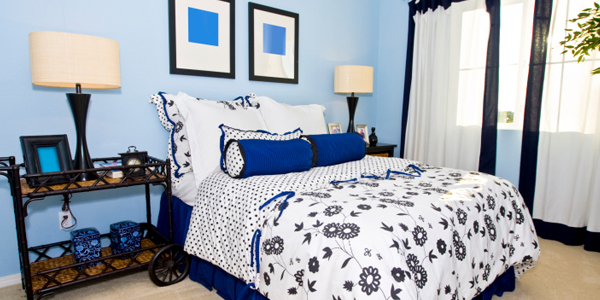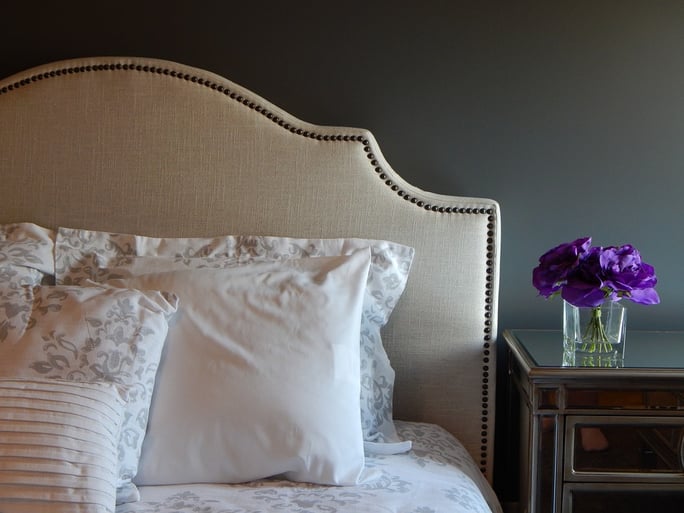
The bedroom has one intended purpose, and that is for sleep. Not for eating, working, or watching TV. Unfortunately, those with insomnia or who suffer from poor sleep quality can form a psychological association that their bedroom is a place of suffering. Such people get up in the middle of the night unable to sleep and toss and turn for 2–3 hours, knowing they’ll be exhausted tomorrow. For these individuals, the bedroom is not the sanctuary it should be. Fortunately, incorporating tools like the best vagus nerve stimulation device can help return your bedroom to the oasis it should be.
Proper bed etiquette
First, head to the bedroom when you are completely tired and go there with the intent to do one thing only — sleep. Even if you live in a studio apartment, divide the bedroom into several parts, and separate the living area.
After all, the bedroom represents rest and quiet. It is your private space to escape from everyday worries, problems, stressors, tempo, and technology.
The best way to make it a getaway is to avoid it as much as possible during the day. When it’s time to go to bed, if you’re lying down for more than 20 minutes without falling asleep, get up and out of the bedroom and do something else. For example, read a book or listen to some soothing music. Then return to the bedroom again when you feel tired.
For the ideal bedroom, use quality bedding, pillows, and a mattress, and last but not least, make sure you have complete darkness and coolness.
Avoid blue light
Each of us has an encoded circadian rhythm, a biological clock, showing that we have certain superpowers at certain times. For example, maximum alertness is around 10 a.m., while the fastest human response time is in the afternoon, about 3–4 p.m. Highest blood pressure is in the early morning, which is why most deaths associated with heart disease occur in the early morning.
To adjust the biological clock, it is important to always go to bed at a similar time, ideally between 10–11 p.m. One reason for this is melatonin. It is an evening hormone that appears at dusk, between 9–11 p.m., and its peak in an adult is at midnight.
Melatonin synthesis is stimulated by darkness. Hence the light, more precisely the blue light from the screens we use, is evil and interferes with sleep hormones. For example, if you read a book on an iPad for one hour instead of an actual book, you would delay the release of melatonin by 2–3 hours, which is equivalent to being in another time zone and jet-lagged. Jet lag is a circadian rhythm disorder.
So strive for sleep tonight. Turn off blue lights at home 2–3 hours before going to sleep, avoiding evening visits to stores where strong LEDs predominate. Set your phone to airplane mode at 8 p.m., and minimize light sources from 8–9 p.m.
You can also download screensavers. It’s better than nothing, but remember, completely avoiding screens a few hours before sleep is better than screensavers. Take no lights a step further in your bedroom by covering the curtains so that no light enters the room, and close the door. If you can’t get the room dark, use a sleeping eye mask.
What is the ideal bedroom temperature?
An interesting fact: It is common for someone who, in general, has trouble sleeping to sleep well while camping. This is due to darkness and cooling, two things that are abundant when camping. This needs to be replicated in your bedroom and is just as important as the right mattress for your body.
Tips for ideal sleeping conditions:
Open the bedroom window. Ventilate the bedroom for 30 minutes to an hour before bedtime. Eighteen to 19 degrees Celsius, or 64.4 to 66.2 degrees Fahrenheit, is the ideal room temperature for sleeping. Less than this is too chilly and more than this may be too hot.
Cool yourself off. If you can’t ventilate the room, then cool down before bed with a cold shower.
Avoid synthetic bedding. To enter a state of deep sleep, during which our physical recovery takes place, your body needs to cool down a few degrees. This process happens naturally, with the help of a circadian rhythm, but if the environment is hot, such as a hot room, or poor quality synthetic bedding is interfering with the cooling down of your body, it will cause sleep problems.
Get high-quality bedding. It is better to choose quality cotton, linen, or wool.
Invest in wool. It is one of the best materials to improve sleep quality. It may appear to have a specific smell or feel gnawing, but when you look at the facts:
- The air permeability of woolen bedding is as high as 86%. It allows you to maintain a comfortable temperature during sleep. Woolen bedding absorbs and evaporates sweat seven times better than traditional bedding.
- Due to its special structure, wool perfectly absorbs and evaporates water. Wool can absorb as much water as 30% of the weight of the wool itself.
The takeaway here is to avoid cheap materials, and at the very least, try to find some woolen sleepwear tonight. Even wool socks improve blood flow and circulation. Several studies show that, for example, wool blankets help you fall asleep four minutes faster than quality satin and over 10 minutes faster than synthetics, especially for the elderly or those with sleep problems.
Evening routines for better sleep
You need a routine to feel maximally rested, productive, energetic, and sharper. This can be as simple as having a few steps in the evening that you follow when you want to have a great rest. There are a few examples of this below that contain the essential principles of good rest.
Sleep routine examples
For a good sleep pattern, your routine must become a habit. The qualities any good evening routine should have include:
- Check your surroundings. — the bedroom should be cool and dark, with a comfy bed, mattress, and sheets.
- Minimize blue light.
- Get some physical activity 2–3 hours before sleep.
- Perform an activity that reduces stress.
- Follow a healthy diet.
You can mix all the tips mentioned above into a couple of options.
Sleep routine option one:
- Three to four hours before bed. Get a workout in, such as cardio or another physical activity. Your heart rate target is 100–120 bps.
- Two to three hours before sleep. Eat a healthy dinner, such as turkey, a small portion of rice, and vegetables, preferably beetroots and spinach.
- Two hours before sleep. Avoid blue light. When it gets dark outside, follow nature’s path and dim your lights.
- Ten to 12 minutes before bedtime. Participate in infrared treatment for 10–12 minutes.
- One hour before sleep. Take magnesium, L-glycine, and calming tea.
- Ten minutes before bed. Listen to ocean waves and white noise.
Sleep routine option two:
- Three to four hours before sleep. Take a walk in the fresh air.
- Two to three hours before sleep. Eat a nutritious dinner consisting of salmon and a vegetable salad.
- Two hours before sleep. Avoid blue light and dim lights accordingly. No caffeine or alcohol.
- One hour before sleep. Cool the bedroom, meditate, and take a calming bath or shower.
Key takeaways:
- Head to the bedroom when you are completely tired and go there with the intent to do one thing only: sleep.
- Bedroom is your private space to escape from everyday worries, problems, stressors, tempo, and technology.
- For the ideal bedroom, use quality bedding, pillows, and a mattress, and last but not least: make sure you have complete darkness and coolness.











